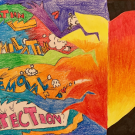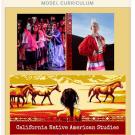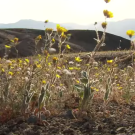- Native American Studies
- SL.6.1, SL.7.1, SL.8.1, W.6.2, W.7.2, W.8.2, W.8.4, RH.6-8.4, RH.6-8.7, HSS 8.8, HSS 8.8.2, HSS 8.8.5
- Grade 6, Grade 7, Grade 8
The relationship between Indigenous peoples and land in the U.S. is deeply rooted in cultural, ceremonial, and historical connections, which have often been disrupted by colonization, forced assimilation, and land dispossession. Concepts such as Tribal sovereignty, land stewardship, and land back movements emphasize Indigenous peoples’ inherent right to govern themselves, care for ancestral lands, and reclaim access to natural resources. These efforts are grounded in values of cultural revitalization, environmental conservation, and self-determination, often in contrast to policies like land acquisition through unratified treaties, residential schools, and the use of public lands for military, resource extraction, or restricted conservation purposes.

















